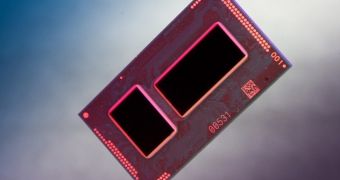So far, when writing about Broadwell, we have been mostly focused on the desktop collection of upcoming central processing units, the chips that would replace the Haswell Core i3, Core i5, and Core i7 CPUs. There are other branches of the brand, though, like the newly-detailed Core M.
Then again, calling it “detailed” is a bit of a stretch, since Intel has not, in fact, released all that much information about it and the processors making up the collection.
Indeed, Chipzilla has not shared a full CPU list with anyone as of yet, nor did it specify pricing and availability, although some ETAs do exist.
For the most part, the Core M line of Intel Broadwell central processing units is expected to crop up in devices during the early holiday season of the ongoing year, 2014. That means late November, early December, although some may still hope for an earlier unveiling.
What Intel did share in its latest news release was a bit of info on the fabrication process utilized in the construction of the Broadwell Core M chip collection: 14nm.
It is a great leap really, from 22 nanometers to 14 nanometers, but more or less necessary in order to preserve Moore's Law, which says that the number of transistors in a dense integrated circuit doubles approximately every two years.
The 22nm technology was first used in 2011, so the move to a better production process is overdue, some may say. Indeed, there were quite a bunch of reports about how the Broadwell line had been delayed. Even one that specifically looked at the Core M Intel CPU series.
It has left the market in an odd state and certain consumers rather confused as to what this will mean when the Skylake processors come out in 2015. It's looking more and more likely that Broadwell will be around for a very short time. But we digress.
The 14nm process promises over two times the reduction in the thermal design point compared to previous generations. That means a much lower TDP than Haswell and a totally silent operation for new devices. Kind of necessary really for a chip said to be one of the main building blocks of The Internet of Things.
Core M units used Tri-gate FinFET transistors (second-generation ones) and will power PC/tablet hybrids that can function without active cooling.
Servers, personal computing devices (laptops/Ultrabooks), and some smart TVs and appliances ought to leverage their capabilities as well, since that's what the Internet of Things is all about: interconnecting every single electronic device in the home.

 14 DAY TRIAL //
14 DAY TRIAL //